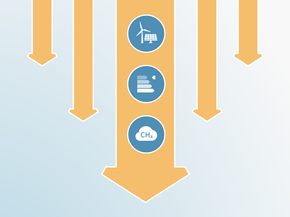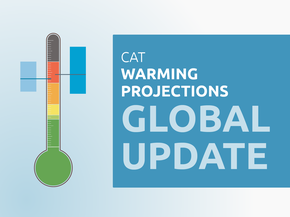Country summary
Overview
Singapore submitted an updated NDC with a strengthened emissions reduction target on November 4, 2022 and an LTS November 3, 2022. We have updated our rating of Singapore based on its updated NDC and LTS. The full CAT assessment of Singapore will be forthcoming shortly.
The assessment below is from our 15 September 2021 analysis.
The CAT rates Singapore’s climate targets and policies as “Critically insufficient”. The “Critically Insufficient” rating indicates that Singapore’s climate policies and commitments reflect minimal to no action and are not at all consistent with the Paris Agreement's 1.5°C temperature limit. Singapore’s NDC target is weak and will be achieved under current policies. A stronger target was not put forward in the country’s March 2020 NDC update. The CAT rates this target as “Critically insufficient” against both modelled domestic pathways and what a fair contribution for Singapore would be. If fully implemented, Singapore’s current policies would result in emissions reductions beyond its targets, but still only in line with 3°C warming. Singapore needs to set a more ambitious target for emissions reductions and establish associated policies to improve its CAT ratings.
We rate Singapore’s policies and action as “Highly insufficient”. The “Highly insufficient” rating indicates that Singapore policies and action are not at all consistent with limiting warming to 1.5°C. If all countries were to follow Singapore’s approach, warming could reach over 3°C and up to 4°C.
Singapore was already on track to substantially overachieve its very weak 2020 and 2030 targets, without implementing any additional policies. Singapore updated its 2030 target in March 2020, but the updated target is not an increase in climate action, contrary to the Paris Agreement requirement to scale it up. The government converted its emissions-intensity target to an absolute emissions target of 65 Mt CO2e for around 2030, which is 28% above 2014 emission levels.
In April 2020, Singapore released a Long-Term Low Emissions Development Strategy, aiming to halve emissions from their peak in 2030 to 30 Mt CO2e by 2050. The strategy shows a lack of commitment to reaching net-zero emissions, aiming to achieve net-zero “as soon as viable” in the “second half of the century”. Singapore needs to substantially strengthen its 2030 target, which could form the basis for a more ambitious long-term target.
Emissions in Singapore are dominated by the energy and industry sectors. The carbon tax, targeting upstream emissions from large emitters, started at 5 SGD/tCO2e from 2019 and will be reviewed by 2023 with the intention of increasing it to between 10 SGD/tCO2e and 15 SGD/tCO2e by 2030. This carbon tax is far too low compared to IPCC estimates for a 1.5°C compatible price. A tax at appropriate level could encourage more renewable energy in place of fossil fuel energy by adding a price for the emitted carbon. However, higher tax levels are likely needed to encourage a significant shift to decarbonising the power sector.
While renewable energy capacity has expanded, natural gas remains the dominant energy source in the power sector, accounting for 96% of electricity generation. At the Singapore International Energy Week in October 2019, the Minister for Trade and Industry made a speech noting that natural gas would continue to play a role in meeting the country’s energy needs for the next 50 years. At the same time, he unveiled a new 2 GW target for solar energy by 2030.
In April 2019, the government-controlled Development Bank of Singapore (DBS) announced it would stop funding new coal-fired power stations globally, yet it continues to be involved in several proposed coal power plants in Southeast Asia.
Outside the power generation sector, Singapore’s mitigation efforts almost exclusively consist of measures aimed at further improving energy-efficiency through programmes like Green Mark standards for buildings, green procurement, public transport, fuel efficiency standards, home appliance efficiency standards, industrial energy efficiency, and waste management. However, with a fossil fuel dependent energy mix, the effect of these policies in emissions is limited and does not compensate for the overall increase in energy demand.
In the transport sector, energy demand and associated emissions are expected to flatten out as a result of multiple measures to promote public transport, modal shifts, and improve the emissions intensity of road transport.
The CAT rates Singapore's target as "Highly insufficient" when rated against modelled domestic pathways. The “Highly insufficient” rating indicates that Singapore’s domestic target in 2030 is not at all consistent with limiting warming to 1.5°C. If all countries were to follow Singapore’s approach, warming could reach over 3°C and up to 4°C.
The CAT rates Singapore's target as "Critically insufficient" when rated against its fair share contribution. The “Critically insufficient” rating indicates that Singapore’s fair share target in 2030 reflects minimal to no action and is not at all consistent with limiting warming to 1.5°C. Singapore’s target is not in line with any interpretation of a fair approach to limiting warming to 1.5°C. If all countries were to follow Singapore’s approach, warming would exceed 4°C.
Singapore has a goal of reaching climate neutrality no later than 2060. The CAT’s assessment of this target will be forthcoming shortly.
Further analysis
Latest publications
Stay informed
Subscribe to our newsletter




